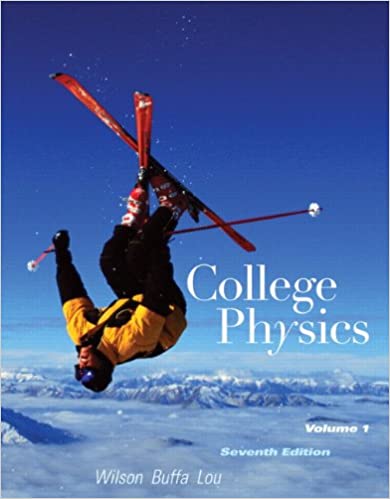
College Physics with MasteringPhysics 7th Edition by Jerry Wilson,Anthony Buffa,Bo Lou
Edition 7ISBN: 978-0321601834
College Physics with MasteringPhysics 7th Edition by Jerry Wilson,Anthony Buffa,Bo Lou
Edition 7ISBN: 978-0321601834 Exercise 84
Two masses are suspended from a pulley as shown in Fig 1. (the Atwood machine revisited; see Chapter 4, Exercise). The pulley itself has a mass of 0.20 kg, a radius of 0.15 m, and a constant torque of 0.35 m · N due to the friction between the rotating pulley and its axle. What is the magnitude of the acceleration of the suspended masses if m 1 = 0.40 kg and m 2 = 0.80 kg (Neglect the mass of the string.)

FIGURE 1 The Atwood machine revisited See Exercise.
Exercise
The Atwood machine consists of two masses suspended from a fixed pulley, as shown in Fig. 2. It is named after the British scientist George Atwood (1746-1807), who used it to study motion and to measure the value of g. If m 1 = 0.55 kg and m 2 = 0.80 kg, (a) what is the acceleration of the system, and (b) what is the magnitude of the tension in the string

FIGURE 2 Atwood machine See Exercise.

FIGURE 1 The Atwood machine revisited See Exercise.
Exercise
The Atwood machine consists of two masses suspended from a fixed pulley, as shown in Fig. 2. It is named after the British scientist George Atwood (1746-1807), who used it to study motion and to measure the value of g. If m 1 = 0.55 kg and m 2 = 0.80 kg, (a) what is the acceleration of the system, and (b) what is the magnitude of the tension in the string

FIGURE 2 Atwood machine See Exercise.
Explanation
Newton's second law states that the net ...
College Physics with MasteringPhysics 7th Edition by Jerry Wilson,Anthony Buffa,Bo Lou
Why don’t you like this exercise?
Other Minimum 8 character and maximum 255 character
Character 255


